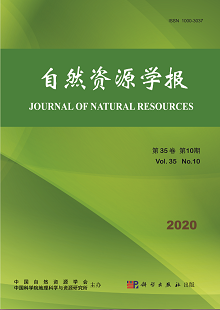Regular Articles
LI Wen-jun, XIAO Chi-wei, FENG Zhi-ming, LI Peng, QI Yue-ji
The strong El Nino in 2015 caused droughts, little rainfall and intensified active fires in Southeast Asia (SEA). To our knowledge, the spatio-temporal characteristics, occurrence types and intensity of active fires as well as their impacts on population and socio-economy have not been fully analyzed. In this paper, we used the active fire data (point in Shapefile format) derived from Visible Infrared Imaging Radiometer Suite (VIIRS) Version 1 (V1) provided by the NASA's Fire Information for Resource Management System (FIRMS), the Advanced Spaceborne Thermal Emission and Reflection Radiometer (ASTER) Global Digital Elevation Model (GDEM, 30 m, V2), Global Land Cover products (30 m, 2015), and Gridded Population of the World (GPW, 1 km, V4, 2015). On this basis, GIS-based monthly, topographical, and land-cover category analyses of VIIRS active fires were comprehensively applied to determine the major occurrence types of active fires at national scale, followed by impact evaluation of active fires on national population density in the major counties of Southeast Asia (excluding Brunei, East Timor, and Singapore). The results showed that: (1) The active fire frequency in SEA reached 81.40×105 in 2015, with Mainland Southeast Asia (MSEA) and Insular Southeast Asia (ISEA) accounting for 69.60% and 30.40%, respectively. Active fires in MSEA and ISEA mainly occurred in the periods of February to April and August to October, respectively. There were huge differences in the occurrence frequency and timing of active fires. (2) The topographical features of active fires were quite different in MSEA. Specifically, active fires in Myanmar and Vietnam were distributed at the elevations below 25 m, while those in Laos (85-105 m and 140-200 m), Thailand (5-15 m and 70-110 m) and Cambodia (5-15 m and 70-110 m) showed consistently a bimodal pattern. The ISEA's active fires were primarily distributed in the plains below 60 m. Additionally, over 35% of the occurrence frequency of active fires was mainly observed in the slope range of 5-15. (3) The frequency proportion of active fires in forests and farmland in SEA was estimated to be 76%. Among them, the figures in forests increased from 52.00% in Cambodia to 74.27% in Laos, while those in farmland increased from 13.18% in Laos to 42.68% in Thailand. (4) Combining the comprehensive features of active fires in occurrence timing, elevation, slope and land cover types, national occurrence types of active fires could be discriminated in two aspects, namely upland swidden agriculture and open burning of crop residues in the plain area. (5) With the increment of population density, the occurrence frequency of active fires first increased and then decreased to a stable level in SEA, and active fires mostly concentrated in the sparsely populated countryside and natural forests. Specifically, over 10% of the occurrence frequency of active fires were located in the areas with the population density ranging from 72 to 91 p/km2 in Myanmar, Thailand, and Vietnam, while more than 30% of the active fire counts were found in Malaysia, Laos, Cambodia, and Indonesia, where the population density was below 20 p/km2.
